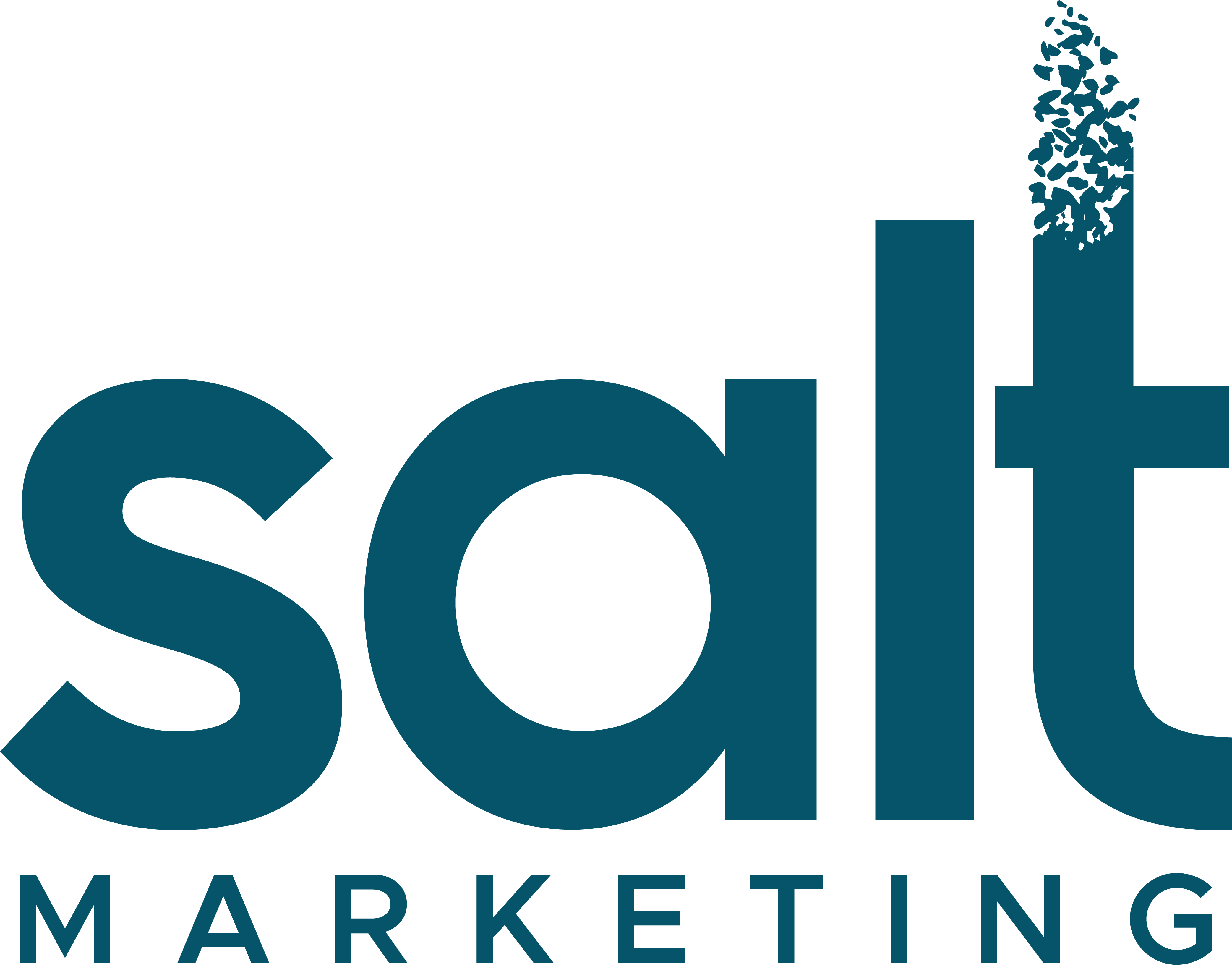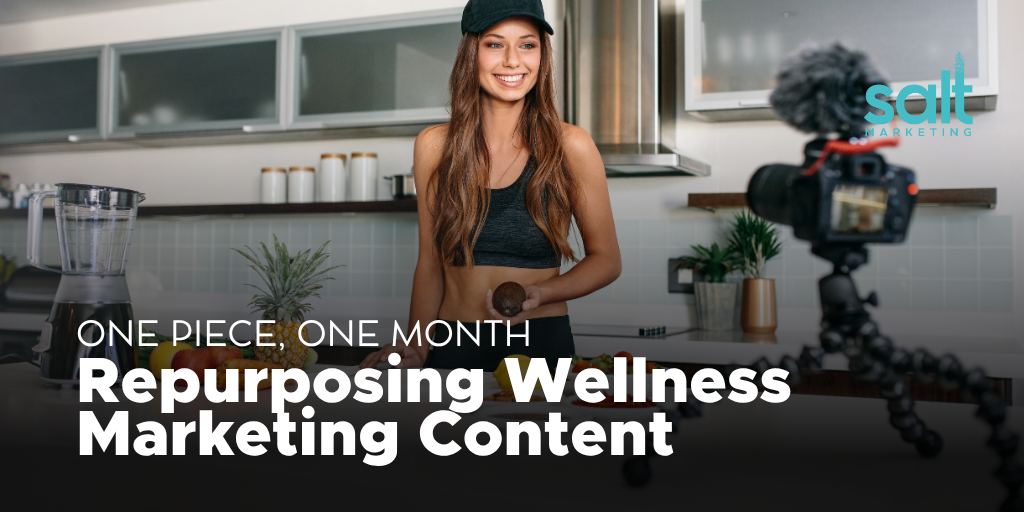Create a Month of Growth-Focused Wellness Content
In our weekly Salted Edge Member Coaching calls, a great question came up recently about generating organic content.
A wellness provider—one of our fitness instructor members—shared that she’s been laser-focused on creating one piece of content to solve one problem or question.
Her question was:
“If I gave you a 20-minute training video, how would you turn it into 2 weeks of social media posts and email content?”
This question gets to the heart of why learning how to repurpose wellness marketing content is so powerful.
If you’ve ever felt stuck on the marketing treadmill—constantly creating, posting, and scrambling for new ideas—you’re not alone. For many wellness practitioners, the thought of keeping up with blogs, social media, email newsletters, and videos feels exhausting.
But here’s the truth: you don’t need more content. You need to repurpose what you already have—strategically, efficiently, and with purpose.
Why Repurposing Content Works for Wellness Practitioners
Wellness business owners face a unique challenge: your time is already stretched thin. Between client sessions, managing your team, and running operations, marketing often falls to the bottom of the list.
Repurposing your content solves that problem. Instead of starting from scratch each week, you can:
- Save time by turning one training or blog into multiple posts.
- Build consistency across every platform.
- Boost visibility by showing up in more places without burning out.
- Create authority by reinforcing your expertise through repetition.
The smartest wellness practices don’t create more content—they repurpose wellness marketing content that already connects with their audience.
Step 1: Start with an Anchor Piece
Every successful repurposing strategy starts with an anchor piece—the foundation of your content plan.
For wellness practitioners, your anchor might be:
- A training video or class recording
- A blog article answering a key client question
- A podcast episode where you share your expertise
- A workshop or webinar you recently taught
- Pro tip: Choose evergreen content—something valuable for months (or even years), not a time-sensitive trend.
Step 2: Transcribe & Analyze with AI Tools
Next, if you're starting from a piece of audio or video content, you'll want to generate a transcript. That can be done in any of a variety of programs from Wistia to Vimeo, Descript, Membership.io, etc. From there, drop your transcript (with timecodes!) into Gemini (Google AI) or ChatGPT and ask it to identify the most valuable, repeatable themes.
Look for:
- Key takeaways or “aha” moments
- Steps, lists, or frameworks
- Emotional stories or metaphors
- Transformation points or “before/after” lessons
Step 3: Clip & Caption for Short-Form Video
Use Opus Pro or Descript’s Reels feature to extract 5–7 short clips—your best 30-60-second moments. These short-form videos are perfect for Instagram Reels, Facebook, or YouTube Shorts. Add branded captions, engaging hooks, and CTAs. Start by looking for moments that are naturally energetic, emotional, or enlightening. These are the parts of your training where your tone, body language, or phrasing naturally draws people in.
Here’s what to look for inside your content:
- Strong statements or bold claims: Anything that makes someone stop scrolling and think, “Wait—what did they just say?”
- Quick tips or micro-teachings: Short, complete ideas your viewer can apply immediately.
- Myth-busting moments: Clips that challenge common beliefs or misconceptions.
- Transformation or storytelling: A relatable story that paints the before-and-after picture.
- Passionate or spontaneous moments: Don’t worry if it’s imperfect—authentic energy always beats over-polished delivery.
Pro tip: Choose clips where you’re teaching, demonstrating, or sharing transformation stories.
Step 4: Repurpose Into Multi-Platform Content
Once your transcript and clips are ready, it’s time to multiply your message!
Here’s how one 20-minute video can fuel two weeks of consistent content:
- 2–3 educational carousel posts in Canva (use “myth vs fact” or “3 steps to…” formats)
- 2 value-packed emails written in Keap, teaching one concept at a time
- 1 thought-leadership post expanding on the “why” behind your teaching
- 1–2 transformation posts showcasing client success or personal insights
Use Canva's Bulk Create feature to generate dozens of unique images from a single template, drawing on a spreadsheet you create from the clips ChatGPT pulled for you. Use Thryv to generate winning social captions and leverage Keap to create AI-powered automated email newsletters
Remember that every piece should align with your anchor theme—reinforcing your expertise and keeping your audience connected.
Step 5: Map It Out in a Content Calendar
Repurposing only works when it’s organized. At Salt Marketing, we use Hive to map every piece for clients. You can do the same by:
- Placing your anchor content at the start of the month
- Scheduling 3–4 posts per week based on that content
- Mixing up formats (video, carousel, email, caption)
- Repeating your message across channels
Example Calendar:
- Week 1: Publish the full video + 1 short clip
- Week 2: Send Email #1 + carousel post
- Week 3: Post Email #2 + thought-leadership article
- Week 4: Share recap video + transformation story
This system keeps your message working for you—without scrambling for new ideas.
Step 6: Automate & Optimize for Consistency
Automation lets your content keep working while you’re with clients—or taking a much-needed day off...
- Thryv schedules your social posts automatically.
- Keap triggers personalized email follow-ups.
- ChatGPT drafts next month’s captions from your analytics insights.
Example: A viewer watches your training, downloads your free checklist, and enters a Keap automation that delivers weekly wellness tips—without you lifting a finger.
Step 7: Use AI for Efficiency, Add Your Human Touch
AI tools give you speed and structure—but your personality brings connection.
The most effective content blends automation with authenticity. Refine every caption and email so it still sounds like you. When you repurpose wellness marketing content this way, you create consistency that builds trust—and results. All of this adds up to helping your practice get found and booked!
Final Thoughts: Work Smarter, Not Harder
When you learn how to repurpose wellness marketing content, you stop chasing content creation and start building lasting visibility.
A single 20-minute training can become a cohesive, two-week campaign that attracts clients, nurtures leads, and grows your brand authority—all while saving you hours every month.
And you don’t have to figure it out alone.
At Salt Marketing, we teach wellness practitioners how to repurpose, automate, and scale through our Salted Edge Membership—complete with ready-to-use templates, AI tool guides, and live coaching calls.
👉 Want to learn how? Join The Salted Edge Membership to turn one piece of content into months of growth.


